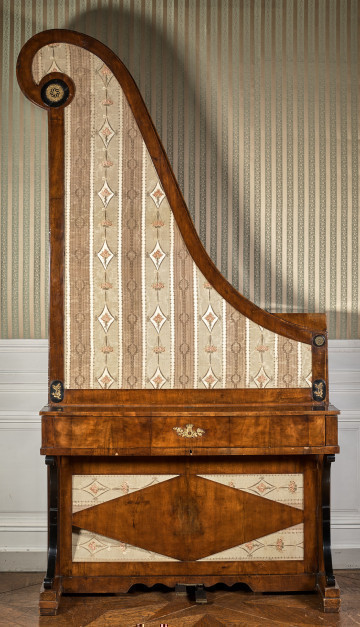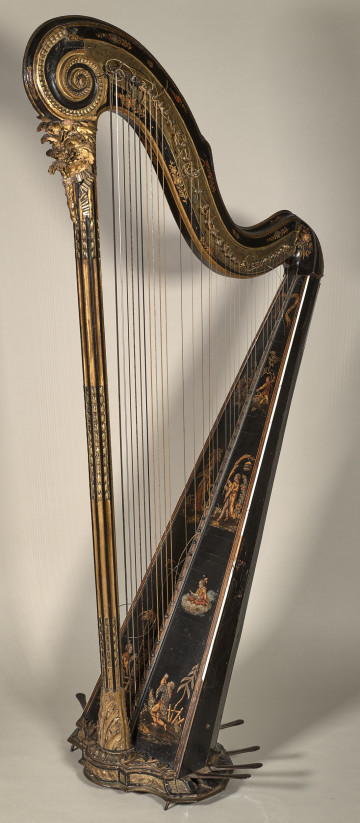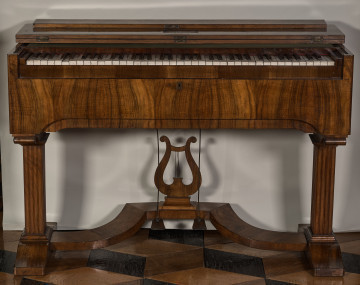
Upright piano
1820 — 1830
Castle Museum in Łańcut
Part of the collection: Broń, instrumenty, varia
While working at the Medici court in Florence, the musician and instrument-maker Bartolomeo Cristofori experimented with the harpsichord c. 1700, he did not even suspect the success of his invention, known as the "gravicembalo col piano e forte" which means “harpsichord playing softly and loudly”. Instead of tangents (clavichord) mounted on levers or jumpers thrown up (harpsichord), a mechanism with hammers that hit the strings was used. The new instrument was called “pianoforte” (fortepiano). Among creators of such instruments in London were Johann Zumpè (originating form Germany) and Gabriel Buntebart. It is possibile that Buntebart came to London in the company of Sophie Charlotte Mecklenburg-Strelitz, excellent harpsichordist and the future wife of King George III. Between 1768 and 1778 the two master craftsmen co-created square pianos that gained popularity as home music making instruments. They were eagerly used both for solo performances as well as accompaniment for amateur theatre plays and singing. After dissolving his first company, Gabriel Buntebart established a new enterprise partnering with Christopher Sievers. The instrument from 1785, bought by the Museum-Castle in Łańcut, is signed with their names. The inscription "Gabriel Buntebart et Sievers Londini Faecerunt 1785 / Princes Street Hanover Square" is inscribed above the keyboard. The instrument is shorter than typical square pianos of that time (4 and a half octave keyboard with the range of C-f3). Possibly, it was intended for children or for a lady’s boudoir. The piano has no legs, it was supposed to be put on top of the table or special frame stand like earlier clavichords. It is worth noting that Izabela Lubomirska's collection in Łańcut included a similar table piano by another well-known London manufacturer, with the inscription "Fridericus Beck Londini fecit 1779. N.4 and 10. Broad Street Soho".
Teresa Bagińska-Żurawska https://orcid.org/0000-0002-9243-3967
Author / creator
Object type
musical instruments
Technique
construction of musical instruments
Material
brass, bone, oak wood, Pinewood, mahogany wood, nut wood, sycamore wood, Heban wood
Creation time / dating
Creation / finding place
Owner
Muzeum - Zamek w Łańcucie
Identification number
Location / status

1820 — 1830
Castle Museum in Łańcut

1789 — 1800
Castle Museum in Łańcut

1830 — 1833
Castle Museum in Łańcut
DISCOVER this TOPIC
Museum of King Jan III's Palace at Wilanów
DISCOVER this PATH
Educational path